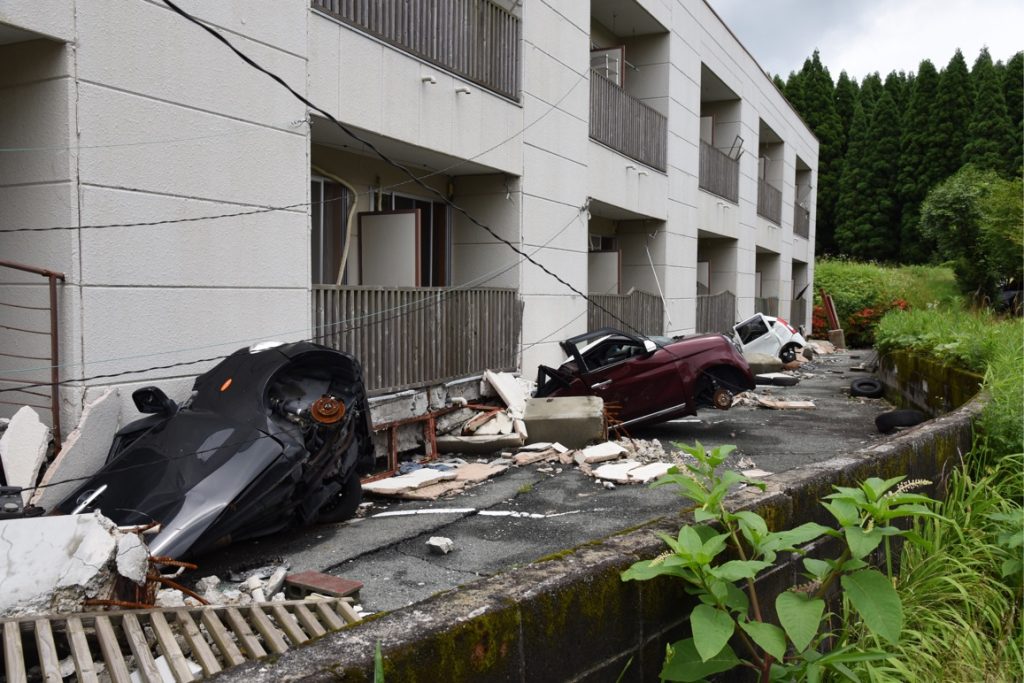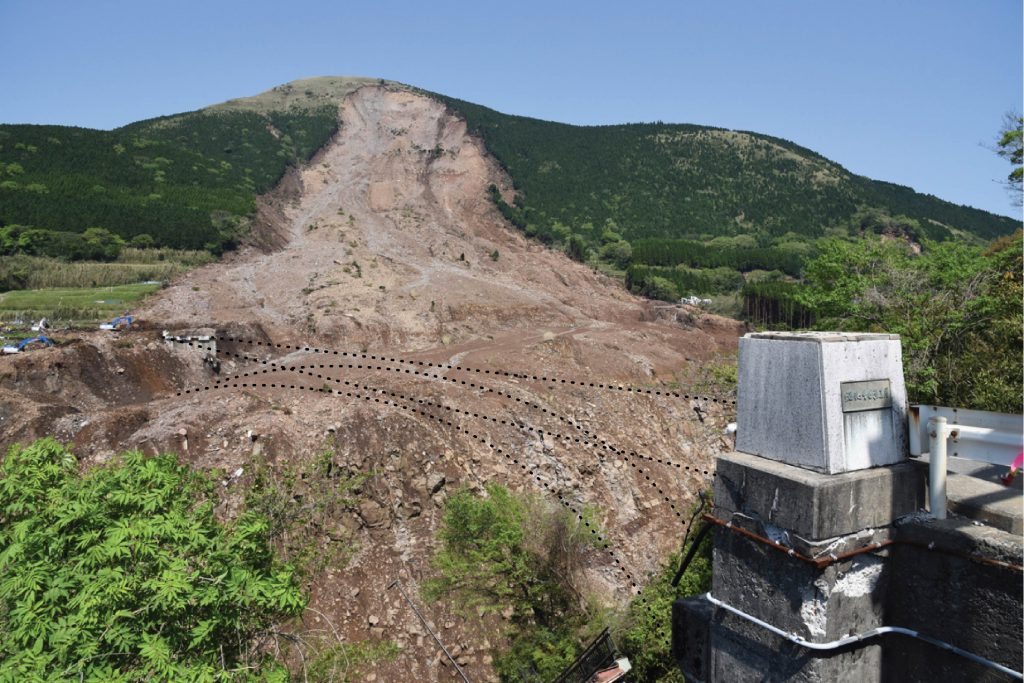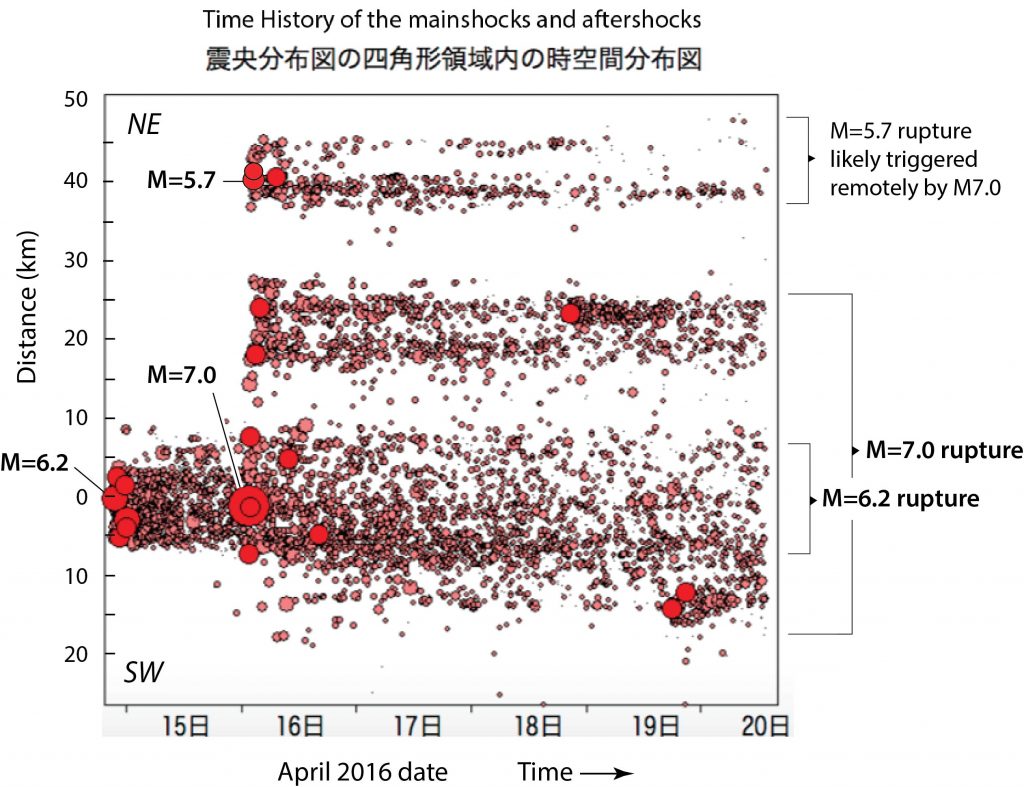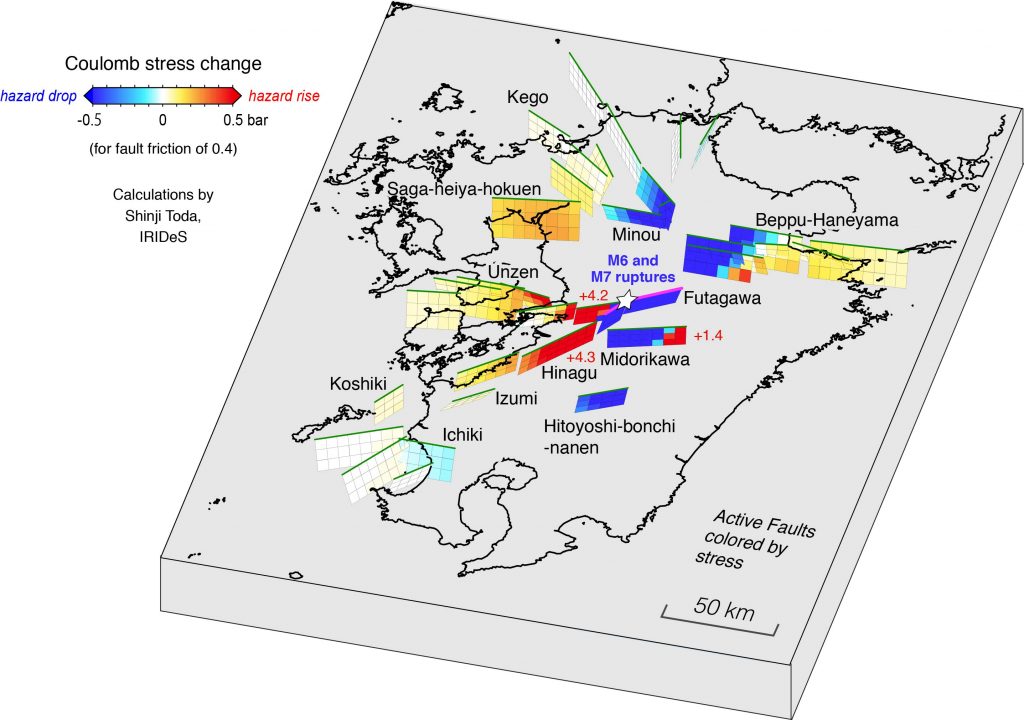Ross Stein, Temblor and Shinji Toda, IRIDeS, Tohoku University, Japan
Citation:Stein R.S., Toda S., 2016, How a M=6 earthquake triggered a deadly M=7 in Japan, Temblor, http://doi.org/10.32858/temblor.009
熊本地震: M6地震がM7地震を誘発し,その後周辺の活断層にも影響が
It’s been over four months since we wrote about the powerful Kumamoto quake sequence: The 15 April 2016 Mw=6.2 (Mjma 6.5) Kumamoto, Japan, shock, which was succeeded 28 hours later by the very damaging Mw=7.0 (Mjma 7.3) shock on the same fault system. We can now give you a preview of crucial new discoveries by Japanese and other researchers.









What insights can we draw from the Kumamoto sequence?
Even to a resilient country with a strong economy, one sees the enormous impact of an urban M=7 earthquake. Ground shaking, fault rupture, and landslides all took their toll, causing damage and disruption.
Scientifically, it is clear that Coulomb stress was imparted by the Mw=6.2 rupture to the site of the future Mw=7.1 mainshock, bringing the fault close to failure. The Mw=7.1 shock nucleated at the site of abundant aftershocks of the Mw=6.2 shock, aftershocks probably caused by that Coulomb stress increase. Together, the Coulomb calculation and seismicity observations provide a powerful tool to forecast future quakes. These forecasts will always be probabilistic; one will only be able to frame the findings in terms of chance. The chance that the M=6.2 would trigger a M=7.1 was small, but it was nevertheless much larger than before the Mw=6.2 struck. We believe that to advance seismic hazard assessment, these calculations must be carried out rapidly and systematically.
New in the Temblor web app: Global earthquake forecast
A few weeks ago we added the Global Earthquake Activity Rate (GEAR) model to the Temblor web app, which was published as Bird et al. (2015), and is called ‘Earthquake Forecast’ in the map layers menu. GEAR gives the likelihood of magnitudes 5-8 everywhere on earth; it is a blend of strain rate measured from GPS and the past 40 years of M≥5.8 quakes. The map contours the earthquake magnitude with a 1% per year chance of occurrence (which means about 60% chance of occurrence in a lifetime). In the map below, one can see that a M=7 shock at Kumamoto (blue pin) is expected about once a lifetime, whereas off Sendai, site of the 2011 M=9 shock, a M=8 has the same likelihood. Indeed, the M=9 Tohoku shock was quite rare, with the last similar event striking in AD 869. The Global Forecast will be added to the iPhone and Android App once we have received user feedback.
Citation:Stein R.S., Toda S., 2016, How a M=6 earthquake triggered a deadly M=7 in Japan, Temblor, http://doi.org/10.32858/temblor.009
References:
IRIDeS (International Research Institute of Disaster Science)
JMA (Japan Meteorological Agency)
IEVG (Active Fault Research Group of the AIST Research Institute of Earthquake and Volcano Geology)
AIR Worldwide, http://www.air-worldwide.com/Publications/White-Papers/documents/Modeling-Supply-Chain-Disruptions-and-Contingent-Business-Interruption-Losses/
Bird, P., D. D. Jackson, Y. Y. Kagan, C. Kreemer, and R. S. Stein (2015), GEAR1: A Global Earthquake Activity Rate Model Constructed from Geodetic Strain Rates and Smoothed Seismicity, Bull. Seismol. Soc. Amer., 105, 2538–2554, doi: 10.1785/0120150058, http://geodesy.unr.edu/publications/bird_BSSA_2015.pdf
- Earthquake science illuminates landslide behavior - June 13, 2025
- Destruction and Transformation: Lessons learned from the 2015 Gorkha, Nepal, earthquake - April 25, 2025
- Knock, knock, knocking on your door – the Julian earthquake in southern California issues reminder to be prepared - April 24, 2025

